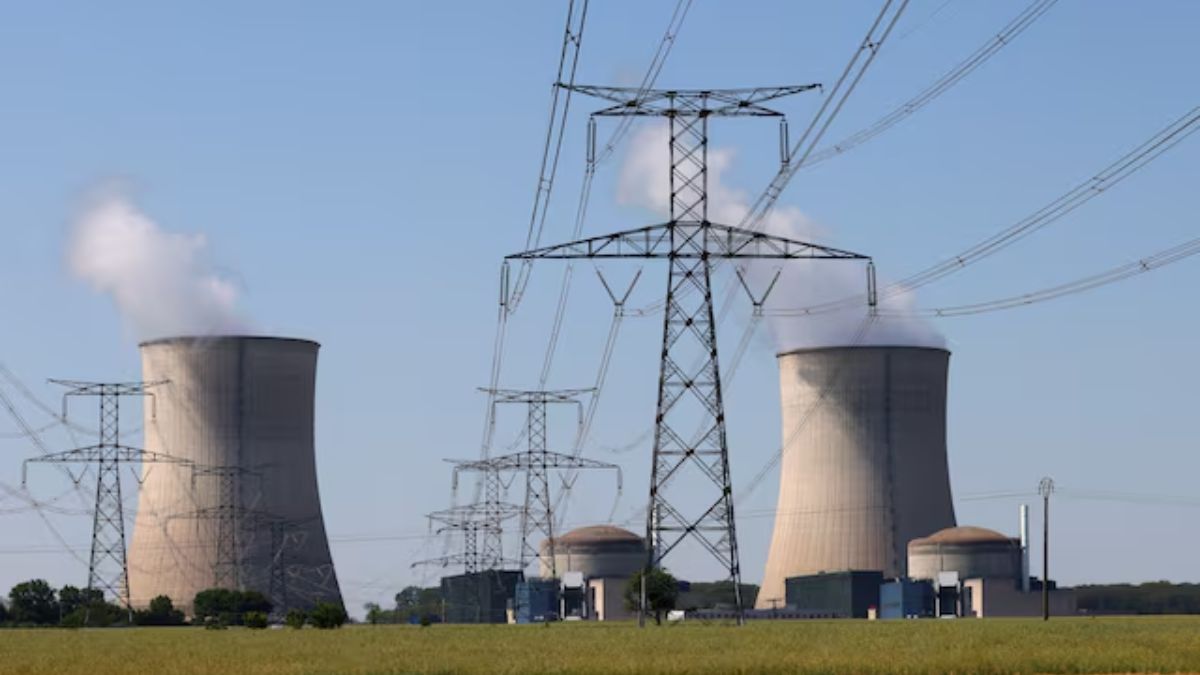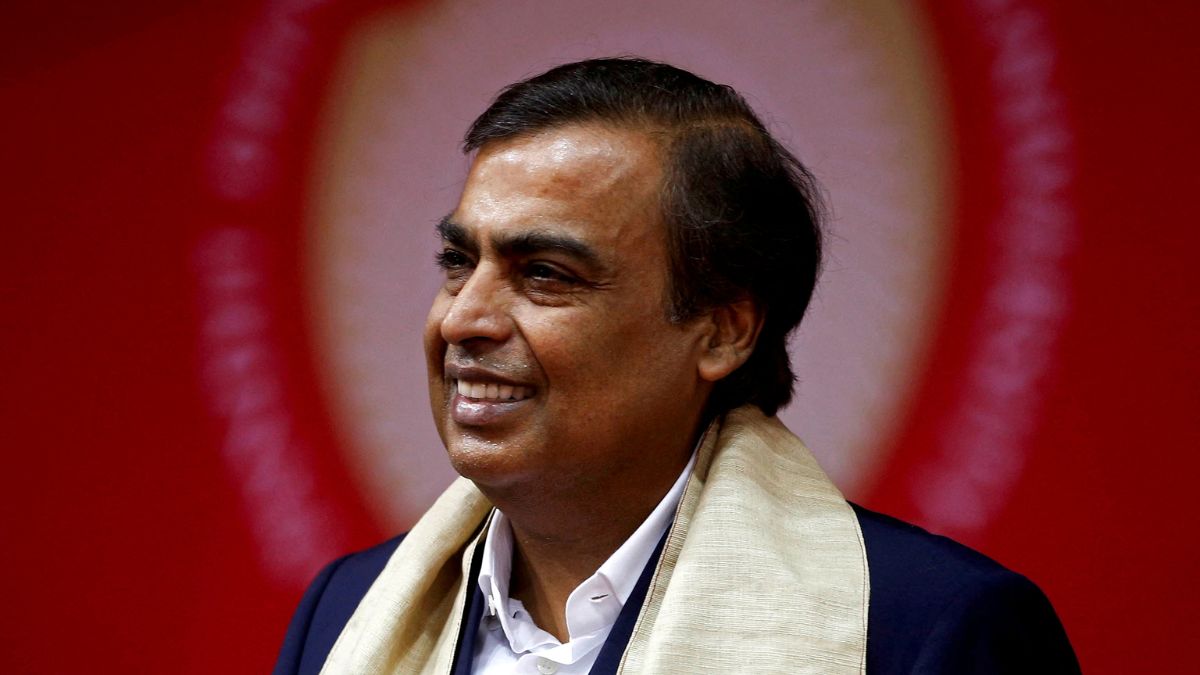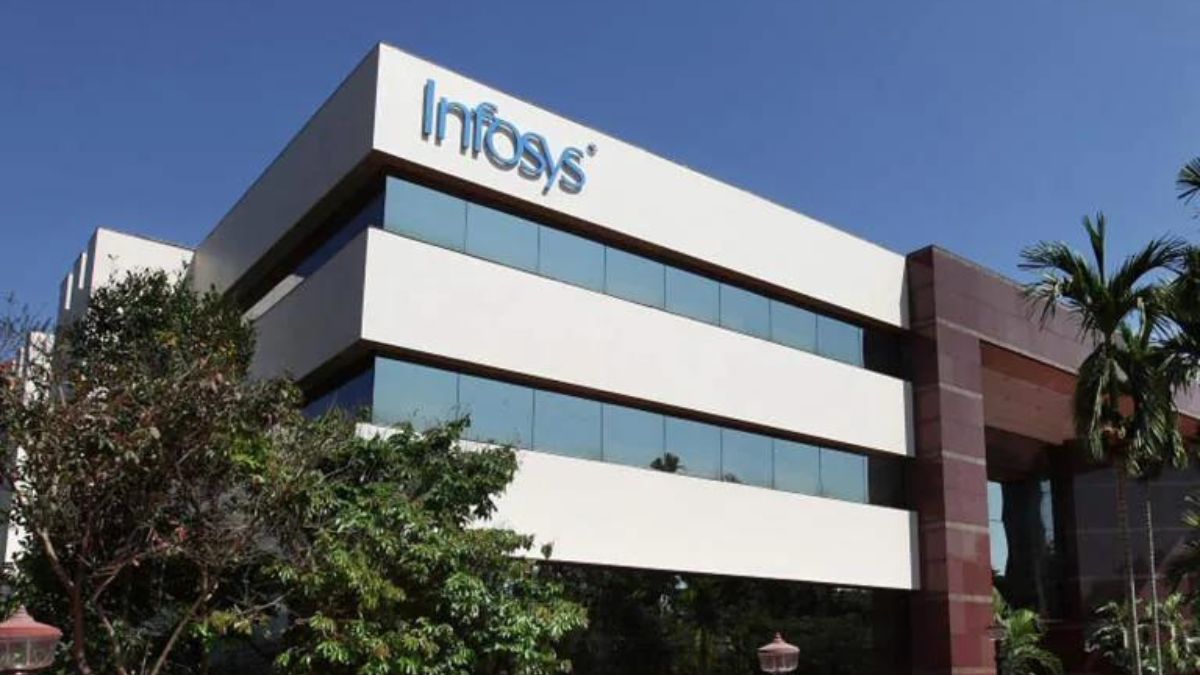The Budget 2024-25 makes way for private sector’s participation in the research and development of small modular nuclear reactors to boost India’s nuclear energy capacity read more
)
Union Finance Minister Nirmala Sitharaman made announcements related to nuclear energy production and private sector's role in it in the Budget 2024 (Photo: Reuters)
As the fastest-growing major economy that also sees itself as the leader of the Global South, India finds itself in a unique position where it has to balance consistent economic growth with climate change goals and set the example for the rest of the world.
Prime Minister Narendra Modi has set 2047 as the year when India would be a developed nation. That would need economic growth fuelled by mounting energy consumption. In the Budget 2024-25, Union Finance Minister Nirmala Sitharaman declared renewable energy and nuclear power to be central to realising these objectives.
Sitharaman said that the Modi government will bring out a policy document to outline the path that India would take. She, however, did not give any timeline for the same.
Sitharaman said, “In the interim budget, I had announced our strategy to sustain high and more resource-efficient economic growth, along with energy security in terms of availability, accessibility and affordability. We will bring out a policy document on appropriate energy transition pathways that balances the imperatives of employment, growth and environmental sustainability.”
Such a policy document is a must for India’s energy transition as it will formally outline strategies and measures to accelerate the adoption of clean energy technologies, says Manoj Sinha, the Co-founder and CEO of Husk Power Systems.
“The policy document mentioned in the Budget will provide a roadmap for India’s energy transition, outlining strategies and measures to accelerate the adoption of clean energy technologies, promote energy efficiency, and reduce the country’s reliance on fossil fuels. By considering the socio-economic implications of the energy transition, the government aims to ensure a just and inclusive transition that benefits all segments of society,” says Sinha.
The future is renewable energy
Sitharaman has banked on renewable energy, particularly solar energy, as the way forward.
In her Budget speech, Sitharaman said that households as well as businesses need to be incentivised to adopt clean energy sources.
For households, Sitharaman announced the ‘PM Surya Ghar Muft Bijli Yojana’. The scheme aims to install solar panels in households that would provide 300 units of free electricity. The surplus electricity would be sold to local utilities and that would also supplement household incomes.
“In line with the announcement in the interim budget, PM Surya Ghar Muft Bijli Yojana has been launched to install rooftop solar plants to enable 1 crore households obtain free electricity up to 300 units every month. The scheme has generated remarkable response with more than 1.28 crore registrations and 14 lakh applications, and we will further encourage it,” said Sitharaman.
Moreover, the Union government had previously launched the ‘National Green Hydrogen Mission’ (NGHM) a well. Even though Sitharaman did not mention in her speech on Tuesday, the NGHM has an outlay of Rs.17,490 crore. Of the allocation announced by January, the programme has an R&D fund of Rs 400 crore.
The government’s allocated fund for the green hydrogen will work towards accelerating the development of green hydrogen, green ammonia, and carbon capture technologies and is a significant step in India’s journey towards net-zero emissions by 2070, says Rutvi Sheth, the Director of Advait Greenergy Private Limited.
Push for businesses to go clean
Sitharaman has announced that the government will incentivise industries, including traditional cluster-based micro and small enterprises (MSMEs), to move to cleaner fuels.
“An investment-grade energy audit of traditional micro and small industries in 60 clusters, including brass and ceramic, will be facilitated. Financial support will be provided for shifting them to cleaner forms of energy and implementation of energy efficiency measures. The scheme will be replicated in another 100 clusters in the next phase,” said Sitharaman in the budget speech.
For ‘hard to abate’ industries, Sitharaman said that the government will set targets and appropriate regulations for transition of these industries from the current ‘Perform, Achieve and Trade’ mode to ‘Indian Carbon Market’ mode will be put in place.
Sinha, the CEO of Husk Power Systems, tells Firstpost the focus on climate adaptation was a pleasant move. He said Sitharaman has taken a crucial step towards enhancing India’s climate action with energy-related announcements in the budget.
“I was very glad to hear the term ‘climate adaptation funding’ as it is a non-trivial way to look at financing renewable energy programs. I am hoping to see more clarity on this action and subsequently policies supporting climate adaptation projects as this will redefine the future of energy security for rural communities that bear the brunt of climate change,” says Sinha.
Push for nuclear energy
Of the total power generation in India, nuclear energy amounts to just 2.76 per cent, according to NITI Ayog, and coal still amounts to 75.82 per cent.
The government plans to change this rapidly in the years ahead and experts have said for a long time that nuclear energy is the way forward as all other renewable energy sources —solar, wind, and hydropower— have severe limitations or environmental consequences.
India, which otherwise have highly-sophisticated nuclear technologies, does not have a proactive nuclear sector. The sector is further warped in regulations that do not leave much scope for the private sector’s regulations. That may now change as Sitharaman announced the research and development of modular reactors with the private sector’s involvement in Budget 2024-25.
Sitharaman said, “Nuclear energy is expected to form a very significant part of the energy mix for Viksit Bharat. Towards that pursuit, our government will partner with the private sector for, one, setting up Bharat Small Reactors, two, research and development of Bharat Small Modular Reactor, and, three, research and development of newer technologies for nuclear energy.”
Small modular nuclear reactors (SMRs) are smaller units that produce up to 300 megawatt electricity either for specific industrial uses within an industrial zone or for specific communities which may be remote for conventional connectivity. The SMRs are a much more advanced technology than conventional larger reactors.
Compared to conventional reactors, the SMRs can be built somewhere else and transported to the site and installed there after just assembly. This is contrary to conventional larger reactors that have to be custom built on-site.
Riju Jhunjhunwala, the MD of Bhilwara Energy Ltd, tells Firstpost in a statement that Sitharaman’s energy-related announcements seek to address the twin needs of energy security and sustainability.
“The focus on nuclear energy development and indigenous thermal power technologies demonstrates a commitment to energy security and efficiency. The budget’s sustainability measures, particularly the rooftop solar scheme, are set to transform energy consumption at both household and industrial levels.”
Sinha, the CEO of Husk Power Systems, says there were also a few missing bits and pieces in the budget. He said that the integration of artificial intelligence (AI) and energy grid should have been announced but was not.
“I found a few missing items that were not spelled out in the budget and that included using artificial intelligence-enabled virtual power plant to systematically integrate decentralised energy resources and with the centralised grid as this is the only viable path to India’s ambition of net zero by 2070. This is the need of the hour and the Power Ministry must consider allocating resources and funding to enable this mechanism,” says Sinha.
Madhur Sharma is a senior sub-editor at Firstpost. He primarily covers international affairs and India's foreign policy. He is a habitual reader, occasional book reviewer, and an aspiring tea connoisseur. You can follow him at @madhur_mrt on X (formerly Twitter) and you can reach out to him at [email protected] for tips, feedback, or Netflix recommendations see more

 1 month ago
37
1 month ago
37
)
)
)
)
)
)
)
)
)
)
)
)
)
)
)
)
)
)
)
)
)
)
)
 English (US) ·
English (US) ·